Viewable


Jellyfish
Location at the Zoo
Australasia
Global Range
Australasia
Moon jellyfish
Aurelia aurita
Order: Semaeostomeae
Family: Ulmaridae
Genus: Aurelia
Jellyfish are ancient creatures. Fossils have been found in rocks that are 650 million years old. Today there are more than 2000 species. Jellyfish are 95% water, 3% protein, and 1% mineral. There are four life stages from birth to adult. There is no backbone, brain, or heart. Adults drift with the currents, but can swim horizontally by pulsations of the bell to keep close to the surface. A primitive nerve net controls muscle contractions as it swims. The adult form is a transparent bell shape that ranges between 5 and 40 cm wide. Underneath is a central mouth surrounded by four oral arms that carry the stinging tentacles. From above, four crescent shaped gonads surround the mouth. On the rim of the bell are eight sets of eye spots sensitive to light and eight statocysts that help orient jellyfish when swimming. Jellyfish are primitive organisms with an outer layer (ectoderm) that covers the external surface and an inner layer (endoderm) that lines the gut. Between these is a jelly layer or mesoglea. The simple digestive cavity acts as a gullet, stomach, and intestine. There is one opening between the oral arms that acts as a mouth, anus, and entrance for sperm (in females).
Conservation Status: IUCN













